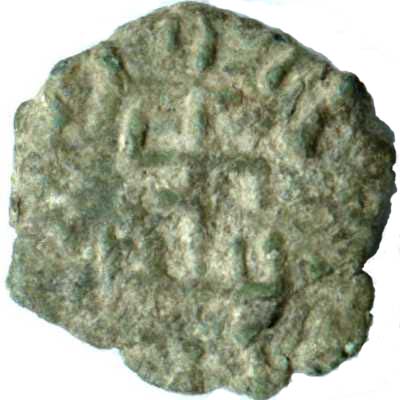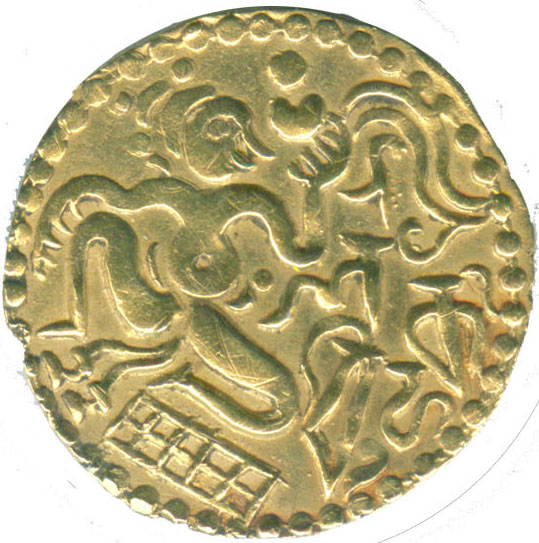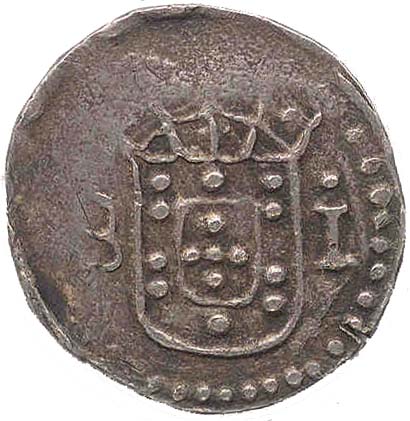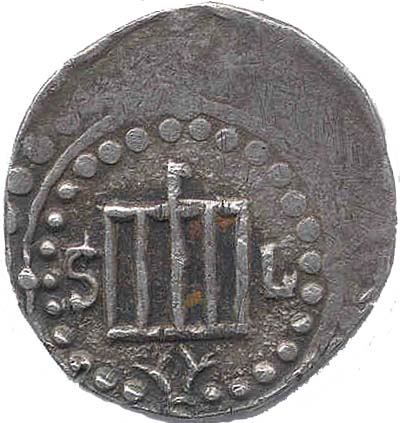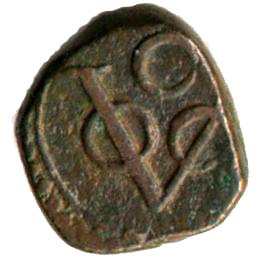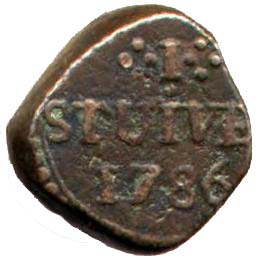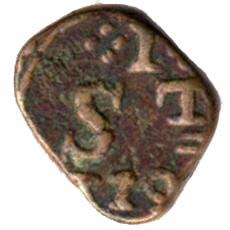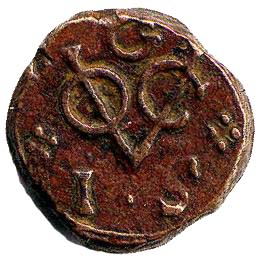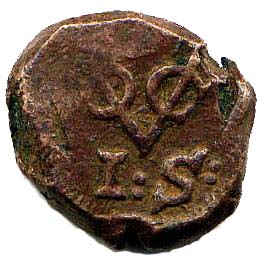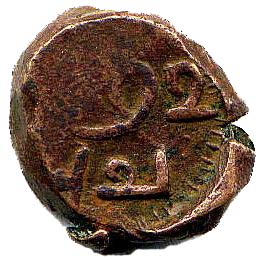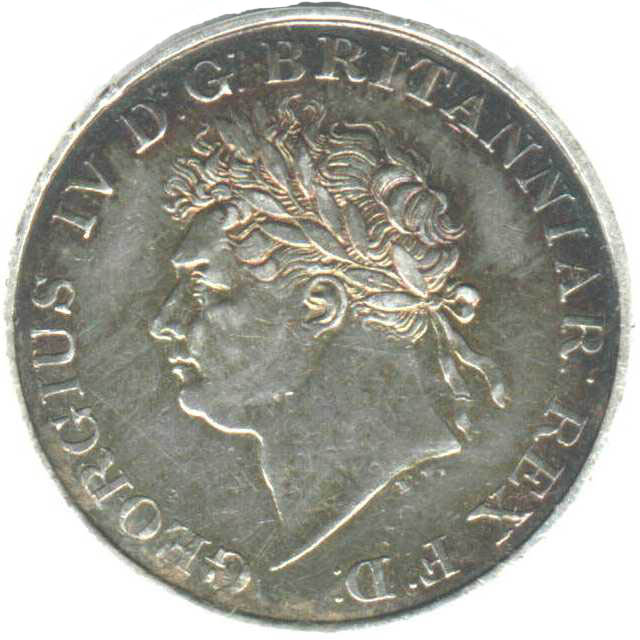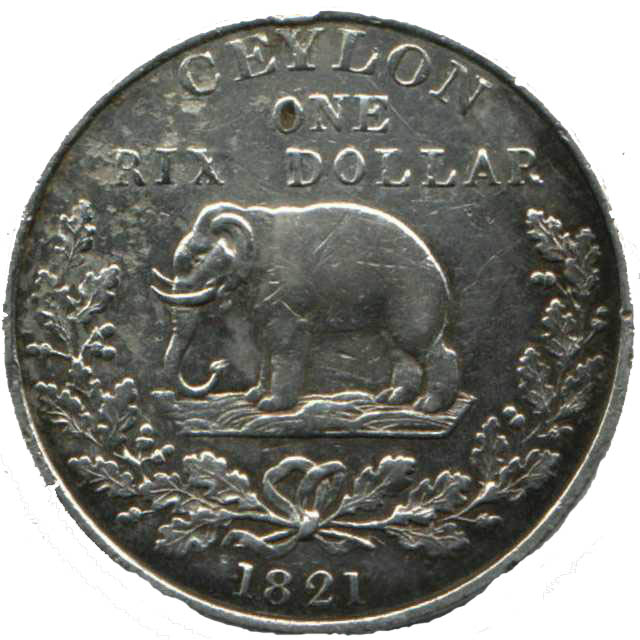Language on Coins
and Currency of Lanka
By Dr Kavan Ratnatunga
President, Sri Lanka Numismatic Society
Most of the indigenous coins of ancient Lanka had only symbols.
The rare lion and swastika lead
coin
has Brahmi text along the periphery around the railed swastika.
This symbol which is seen cut at the commencement of stone
inscriptions by Lankan kings, is recognized as the Royal
standard of the early Anuradhapura era.
Sri lak viha appears on the 8th century gold kahavanu
coin.
The coins of RajaRaja Chola replaced lak viha with RajaRaja.
After Lanka was liberated in 1070 we
find coins in the names of VijayaBahu, ParakramaBahu, Nisankamalla,
Sahasamalla, Lilavati, Dharmasokadeva, Buvanekabahu. Most of the coins
of latter monarchs are minted in copper. Known then as Massa of which
large numbers are found in hoards. All these medieval coins had text
in DevaNagari.
The 15uh century Setu massa are the first Lankan coins with Thamil
text. They were issued by the Arya Chakravartis in Jaffna between
1462 and 1597. These copper coins has the Standing Monarch
characteristic of most medieval Lankan coins.
In this coin
the word Setu appears below the Nandi bull couchant facing
left.
A Portuguese coin had
S:LOVRENCO, as the port in Colombo port was named after
São Lourenço. The 1631 Silver Tanga
coin shown has initials S L
on either side of the grill with fire beneath, on which this Christian
martyr was burned by emperor Valerian in the 3rd century.
Sinhala text first appeared on a rare Tin-lead aka
coin with the date
1747. The coin was to be pierced with a hole for the purpose of
stringing. According to Codrington they were minted to relieve a
shortage of duits for arecunut trade with the Kandyans. This may
explain the Sinhala Text. This coin is extremely Rare and I have seen
one only in the British Museum collection.
Dutch coins had the VOC (Verenigde Oostindische Compagnie) monogram of
the Dutch East India Company. These crude thick Copper Dump
coins were
minted locally between 1783 and 1795 in Colombo, Trincomalee, Galle
and Jaffna. Colombo (C) had STUIVER and Trincomalee
(T) had ST. The Galle (G) had value in Sinhala
text and the Jaffna (I) had Thamil text.
Lanka's first currency note was issued in 1785, which was in Rix
Dallars and called Kredit Brieven and payed 3% Interest. It had text
in Dutch, Sinhala and Thamil. This Dutch liability was taken over by
British in 1796.
Early British coins had a standing Elephant facing left with CEYLON
GOVERNMENT. The locally minted copper dump
coins
from 1801 to 1816 had
value as a fraction of a Rix Dollar (48 Stivers), and the Silver Dump
coins
minted from 1803 to 1809 had value in Stivers. The very iconic Silver Rix
Dollar
coin
of 1821 has George IV. All these coins had text only in English.
 Currency was issued by Ceylon Government Treasurer in Rix Dollars till
1825. The logo was Britannia. The text was in English but the value
was also given in Sinhala and Thamil. From 1827 currency note were
issued in Pounds Sterling. The trilingual value has been maintained on
all coins and currency notes issued in Lanka from 1827 to present.
Currency was issued by Ceylon Government Treasurer in Rix Dollars till
1825. The logo was Britannia. The text was in English but the value
was also given in Sinhala and Thamil. From 1827 currency note were
issued in Pounds Sterling. The trilingual value has been maintained on
all coins and currency notes issued in Lanka from 1827 to present.
|
| 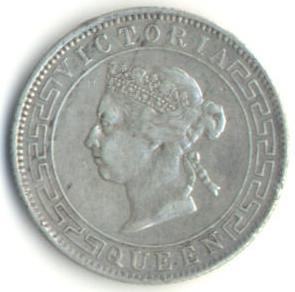
| 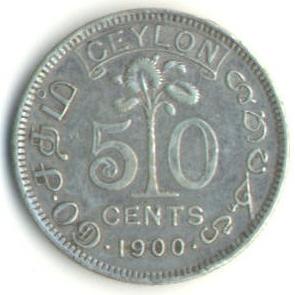
|
Decimal coins were issued since 1870. Coins had the Talipot Palm tree
on the reverse till 1942 and the Monarch on the obverse. Coins were
issued with Queen Victoria (1870-1901); Edward VII King & Emperor
(1902-1910); George V King and Emperor of India (1911-1929); George VI
King and Emperor of India (1937-1945); King George the Sixth (1951)
and Queen Elizabeth Second (1955-1957).

| 
|
Stamps issued from 1857 to 1947 had text only in English. From 1948 to
1972 it had Ceylon, Sri Lanka in Sinhala and Ilankai in Thamil. In
1956 the currency notes interchanged English text to Sinhala. Only the
Value appears in English and Thamil. The portrait of Queen Elizabeth
II was replace with the Ceylon Armorial ensign.
|
| 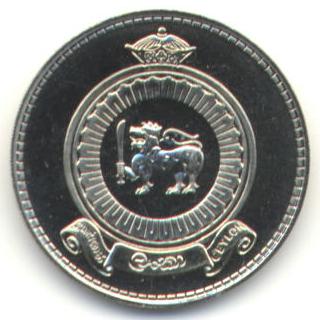
| 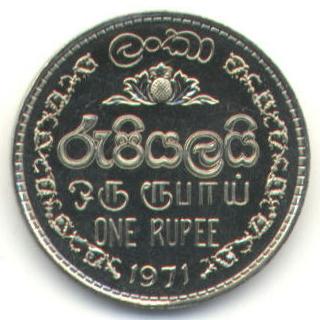
|
When that was used on regular
coins from 1963 to 1971 the
name of the country only in Sinhala was Lanka, although commemorative
coins used Sri Lanka.
Only from 1969-5-10 was the name of the Bank added in English and
Tamil. In 1972 the coins got
Sri Lanka in Sinhala, but the name of the bank in English on the Currency
notes remained as Central Bank of Ceylon till 1985.
Coins and Currency of Lanka reflect the long history of language used in
the Island over period longer than two Millenniums.
More details of these and other coins can be found in the Authors website
http://coins.lakdiva.org.lk.
This text is a summary of a presentation to the Ceylon Society of
Australia, Colombo Chapter on 2011 August 26th. A version of this
article (less well illustrated and not to scale) appeared in the 2011
Novenber issue of Ceylankan Pages 14-16.
If this page is printed at 100 dpi the coins will display at 200%
of actual size and currency at 75%.

